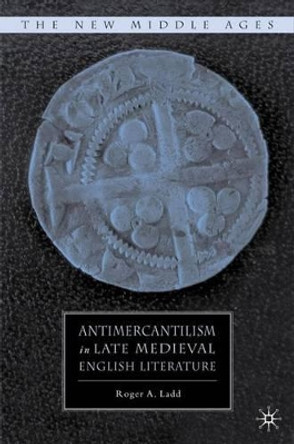Description
Costume historians and literary critics have sharpened understandings of dress as it constructs bodies and identities, but none has considered how representations of clothing in medieval literature respond to clerical discourses that sought to regulate contemporary aristocratic fashion. In Sartorial Strategies: Outfitting Aristocrats and Fashioning Conduct in Late Medieval Literature, Nicole D. Smith establishes that writers of romances redirect the negative depictions of the courtly body found in clerical chronicles and penitential writings into positive images that convey virtue.
Smith structures her book around two key moments in fashion history: the transformation of expensive attire by lacing, knotting, and belting in the twelfth century and by form-fitting tailoring in the fourteenth. She selects two literary texts in French from the twelfth and thirteenth centuries-Marie de France's Guigemar and Heldris of Cornualle's Roman de Silence-and two in English from the fourteenth century-Sir Gawain and the Green Knight and Chaucer's The Parson's Tale-for analysis in light of these changes in fashion.
While religious and political documents decried the immorality inherent in sumptuous clothing and attempted to restrain the behavior of individuals wearing stylish garments, the literature selected by Smith reimagines fashion-savvy aristocrats as models of morally sound behavior in a pedagogical program advanced not by preachers but by poets. Smith argues that each poet responds directly to the accusations of religious narratives that luxurious garments hinder the soul. Smith also offers original readings of lesser-known penitential guides, such as the Clensyng of Mannes Sowle and the Memoriale Credencium, thus illustrating an extensive conversation between romance and penitential guides.
About the Author
Nicole D. Smith is assistant professor of English at the University of North Texas.
Reviews
"With Sartorial Strategies: Outfitting Aristocrats and Fashioning Conduct in Late Medieval Literature, Nicole D. Smith delivers an edifying contribution to studies of the relationship between clothing and imaginative literature in the medieval period. Her perceptive readings of key literary texts in the context of fashion history not only provide new insights into the workings of those texts but also link them to an important area of material culture, an area that, Smith shows, exercised the imaginations of many commentators in the period." -Claire Sponsler, University of Iowa
"This book contributes to the growing awareness of the importance of ethics in the study of medieval culture, not simply in terms of ethical/penitential literature per se, but ethics as a characteristic preoccupation of medieval thought that permeated all aspects of life in the Middle Ages, in particular its literature. Nicole D. Smith's study will appeal to researchers of medieval literature in general and of French and English literature in the later Middle Ages in particular." -Richard Newhauser, Arizona State University
"Smith's complex claim that 'differing sartorial strategies reveal a rich conversation between romances and religious documents in the high and later Middle Ages that in turn engages broader cultural debates over morality at a time when changes in fashion and ecclesiastical practices shaped the literary landscape' is fully borne out in this fascinating study. By placing individual courtly texts in their historical religious background and limiting her question to the externals of clothing, Smith is able to read against the grain of most contemporary cultural scholars, even other feminists who share her sense of the political importance of literary uses of fashion. Smith carves out some startling and generous new readings." -Bonnie Wheeler, Southern Methodist University
"There has been much study of the tension between the values and aims of the medieval church versus those of the aristocracy and its court artists, but Smith breaks new ground with her erudite application of the lens of academic inquiry to the area of clothing as it is addressed in a wide-ranging conversation between diverse sources." -Comitatus
"In modern parlance 'fashion' suggests superficial change as designers and consumers seek new silhouettes, new materials, and new techniques. In the Middle Ages, however, the term related to appearance, conduct, and, according to Nicole D. Smith, morality. . . . This well-researched and informative book . . . offers provocative and insightful new readings of familiar texts that will be of interest to both specialists and advanced students alike." -Medieval Feminist Forum
"Overall, this impressive study contributes both to medieval dress history and medieval literary scholarship. A wide variety of interdisciplinary sources were carefully employed to support Smith's main conclusions, especially that the aristocratic readers of these texts would have been exposed to a positive reading of aristocratic dress instead of the negative interpretations found in contemporary clerical writings. . . this book makes accessible the debate on aristocratic fashion and morality to specialists and nonspecialists alike." -Sixteenth Century Journal
"Thought-provoking and original . . . the tight focus on vestments and the breadth of the book prove that Smith's methodologies can be applied with equal success to a range of vernacular literature. Smith's meticulous coverage of the social and ideological changes informing medieval fashion allows her to place medieval garments under a metaphorical microscope and offer new insights into the redemptive power of noble attire." -Modern Language Review
"Smith widens the scope of how we can understand clothing in medieval literature. Situating clothing as pertinent to both specific moments in time as well as to the progression and meaning of narrative, Smith's analyses . . . offer persuasive and original re-interpretations of texts that scholars have long-considered." -H-France Review
Book Information
ISBN 9780268041373
Author Nicole D. Smith
Format Paperback
Page Count 298
Imprint University of Notre Dame Press
Publisher University of Notre Dame Press
Weight(grams) 404g
Dimensions(mm) 229mm * 152mm * 16mm









